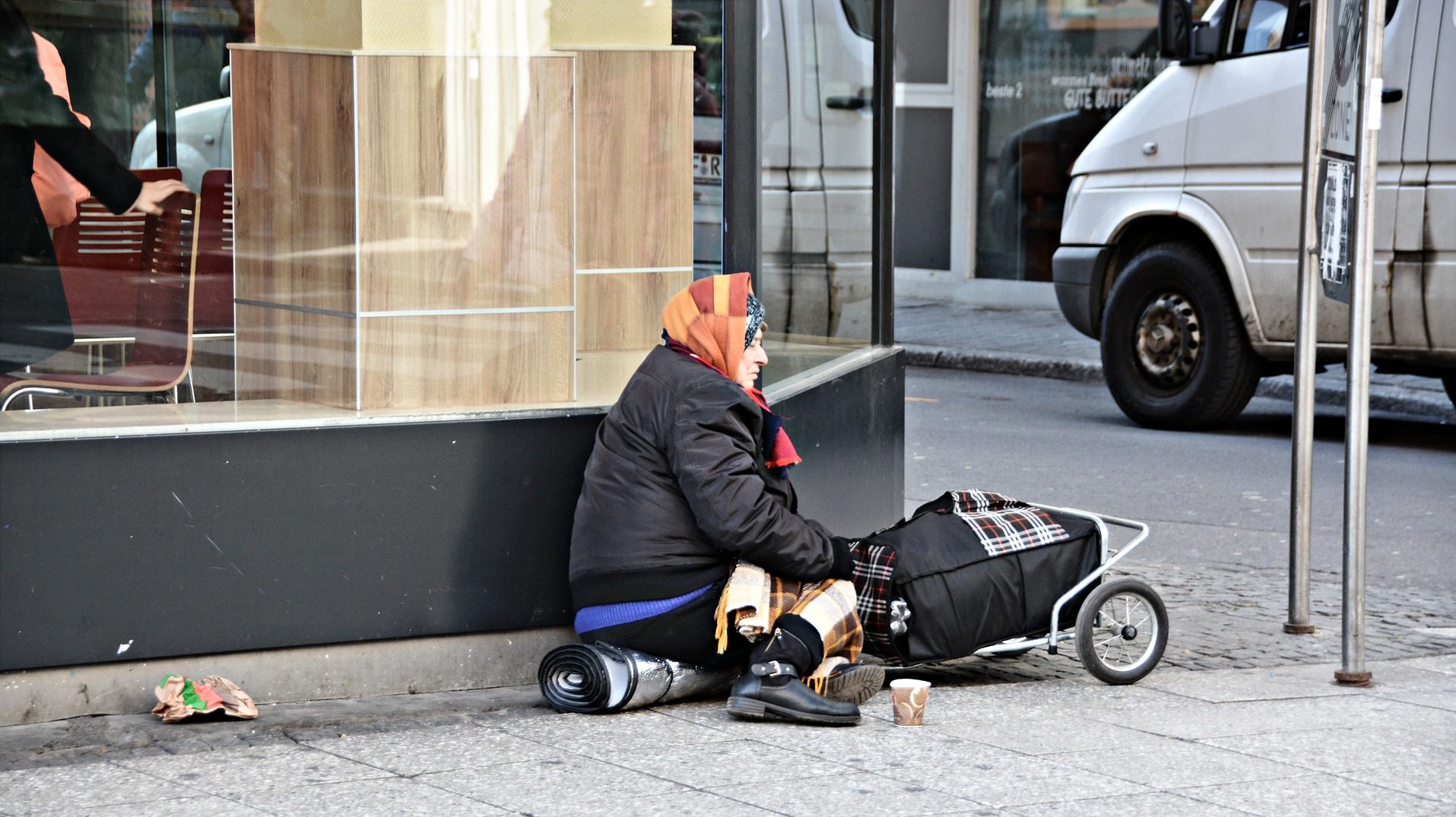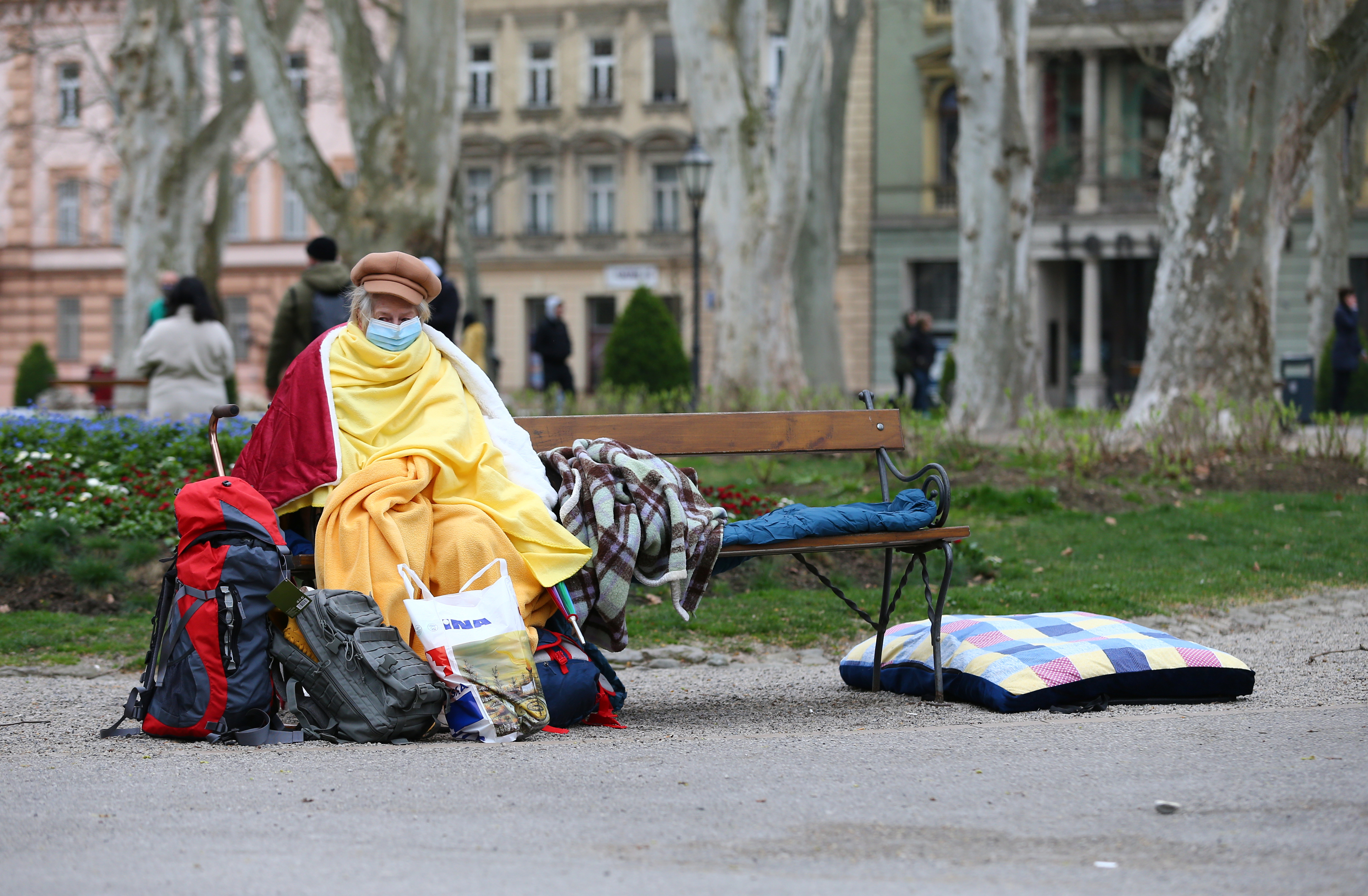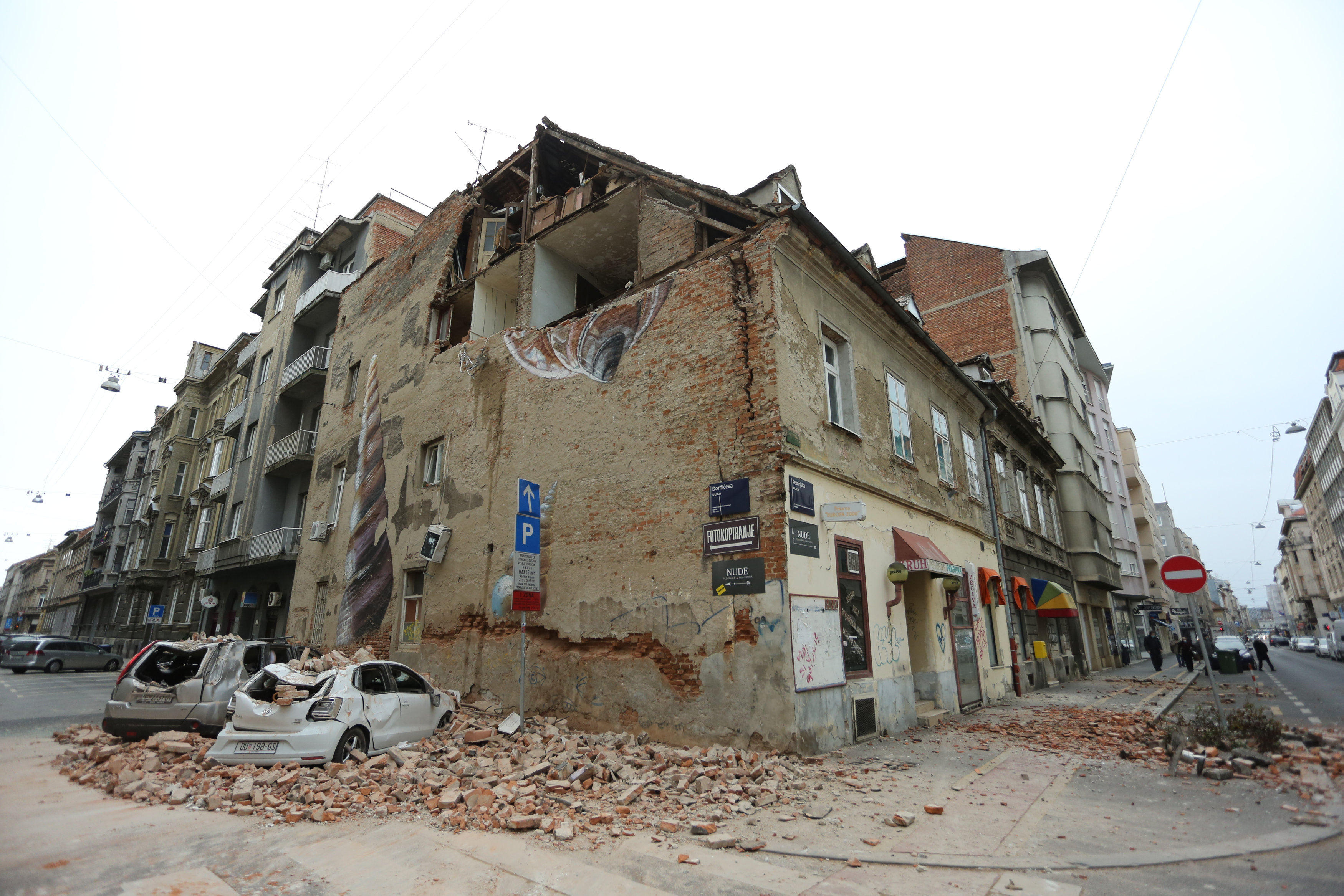02 March 2021
Originally published
16 December 2020
Source
Pandemic, earthquake, floods – three disasters and three missed opportunities to help Croatia’s growing homeless population.
“Given your weak immune system, living conditions and the available options for taking precautionary measures, your group is one of the most vulnerable groups with regard to the risk of coronavirus infection. Still, you can protect yourself and others, which is why we would like to share some of the recommendations provided by the authorities: Try to wash your hands as often as possible with soap and water… Avoid touching your eyes, nose, mouth – especially if you haven’t washed your hands. When coughing or sneezing, cover your mouth and nose with a tissue or sneeze into your elbow.”
These instructions were printed on a small flyer distributed by the Croatian Homeless Network (Hrvatska mreža za beskućnike), which proved crucial for the homeless population of Zagreb in the early days of the pandemic, when they served as a rare and valuable source of information.
The homeless do not have easy access to radio or television and some do not own a cell phone, so in the first days of the pandemic many did not know exactly what was happening. This is why the role of the aforementioned Croatian Homeless Network, along with the Fighter Association (Udruga Fajter) and other NGOs and groups working with the homeless was of such importance.
On 25 February, the first case of coronavirus in Croatia was confirmed. Prior to that, the country was, like many in Europe, observing the pandemic from a distance with increasing alarm. Less than a month after the first case, on 22 March, public transport was suspended, as was all travel between cities and counties, and the country went into partial lockdown.
Zvonko Mlinar of the Croatian Homeless Network explained to BIRN what happened in the first days of the pandemic. Since it knew the homeless were particularly vulnerable to the coronavirus, his organisation and other NGOs working with this section of the population immediately asked the Ministry of Demography, Family, Youth and Social Policy (which was later, after the July election, merged into one mega-ministry of Ministry of Labour, Pension System, Family and Social Policy) to activate the Homeless Winter Weather Shelter Plan (Plan zbrinjavanja beskućnika u zimskim uvjetima).
This plan, which the ministry activates every winter when temperatures begin to drop, stipulates that all shelters in Croatia either need to expand their capacity to house more homeless or the local authorities must provide new capacity.
The plan was activated in theory, but in practice Mlinar said it was “an entirely different story”. Not all local authorities actually provided additional capacity, while they gave out contradictory information: on the one hand, shelters were told to take people in and expand their capacity; on the other, they were supposed to be closed, not letting clients in or out due to fear of infection. In the whole of Zagreb, out of three homeless shelters, only the one in Velika Kosnica was accepting more homeless.

Homelessness in Zagreb is a growing problem. Photo: © Ombudswoman of the Republic of Croatia
“You have to bear in mind that the situation then was far worse than it is now, because people were scared, they did not know what to expect. There was panic among the homeless,” Mlinar told BIRN.
A growing problem
According to official data from the Ministry of Labour, in 2019 there were 511 homeless people in Croatia, up from 391 in 2015. The overall capacity of all the shelters in Croatia is for just 380 people. However, there is a huge discrepancy between what the official statistics say and what people working with the homeless see every day.
Mlinar estimates there are between 700 and 1,000 homeless people in Zagreb alone, while Mile Mrvalj of the Fighter Association, a long-time activist for the rights of the homeless who was once homeless himself, puts the number even higher at 2,000 in the capital alone. Homeless groups, NGOs and advocates working with the homeless estimate that there are around 10,000 people in Croatia living in inadequate conditions in urban areas.
“The thing is, the people at the ministries are out of touch with reality and the actual conditions on the ground,” Vesna Hari, a social worker for the NGO Home of Hope (Udruga Dom nade), told BIRN. “We, those who work with the homeless, know the reality of the situation and that’s what needs to be emphasised – the fact that the biggest issue is with those coming to Zagreb from other parts of the country, even from other countries.”
These people gravitate toward Zagreb because the capital offers more possibilities for employment and an escape from the shame and stigma associated with unemployment and homelessness in smaller towns and villages. This is summed up by the phrase often heard among the homeless and those working with them, “You will never go hungry in Zagreb”, meaning that there is a network of groups, soup kitchens and NGOs providing basic services to the homeless in the capital. This, however, does not provide a systemic solution to the problem.
“For years we have seen an increase in the number of people coming from outside Zagreb, from all over Croatia, even Bosnia and Herzegovina. And we don’t have anything to offer them, except for a couple of housing communities,” Hari lamented.
She also pointed out that even these housing communities, much like other NGOs working with the homeless, depend on financing derived from annual projects, which means there is no perpetual source of financial support. This dependence on project-based activities is exactly what many people working with the homeless single out as particularly problematic.
Hari’s organisation, for example, had to cease operations at the beginning of this year – not because of the coronavirus, but because of funding difficulties and the fact that funding for previous projects had run out before new sources could become available. The Croatian Homeless Network reported suffering similar problems.
This is especially difficult for NGOs like Hari’s that provide services like showers and laundry, since it means they lose the ties and trust they have built up with clients. Loss of funding also often means loss of leases, so the NGOs and associations have to relocate, which happened to Home of Hope on several occasions.
Hari thinks that the minimum the City of Zagreb needs to provide is some sort of reception centre, where those who come to Croatia’s capital would at least be given a place to sleep and where some sort of “triage” for the homeless could be performed.

A woman takes shelter in the streets following an earthquake in Zagreb, 22 March 2020. Photo: © Antonio Bronic / Reuters / picturedesk.com
The Ministry of Labour told BIRN that it would be implementing a total of 20 projects and programs worth almost 4 million kuna (530,000 euros) this year alone. When asked about its plans for the future, considering that the temperatures are now dropping and the pandemic does not seem to be abating, the ministry referred to the aforementioned Homeless Winter Weather Shelter Plan, saying that a fresh one for the winter of 2020/21 is currently being prepared.
Travel troubles
When public transport was suspended on 22 March, the move particularly affected the homeless, since they had no way of reaching the soup kitchens that are mainly located in the city centre.
Mrvalj of the Fighter Association described the beginning of the pandemic as terrible. “The homeless were confused. They were even told to leave public squares; they couldn’t believe what was happening. Additionally, where would a homeless person get a mask or hygiene products? This is a category of people who are potential epidemiological bombs… They can easily get COVID-19 and spread it. And they were simply being chased away from the streets and public squares, without even being notified. They didn’t know what COVID-19 was, what a coronavirus was; they only knew that it was dangerous,” he related. “On the other hand, some people were telling them it was all a hoax, a lie,” Mrvalj added.
The Croatian ombudswoman, Lora Vidović, reacted to the worsening situation by asking the Ministry of Demography on 2 April whether it was planning to provide additional housing capacity for the homeless in response to the crisis, possibly in heated tents or housing containers, which had been used after the floods in 2014.
Vidović also requested the Ministry of Internal Affairs address the issue of how the “Decision on Strict Restriction Measures Regarding Loitering” was being implemented, as well as how the homeless were being informed about the pandemic.
The Ministry of Internal Affairs added that the homeless had been directed towards housing shelters. BIRN received no reply to questions regarding the number of people that police officers had taken to the shelters or the manner in which the homeless population was informed of the situation.
After the initial problems, by the end of March/beginning of April, the City of Zagreb did start responding and within two weeks it had organised additional soup kitchens in various parts of the city, as well as donations in the form of face masks and disinfectant.
Romana Galić, head of the City Office for Social Protection and People with Disabilities, highlighted the positive situation where a lot of people were volunteering in the preparing and distributing of food to the homeless. She also reiterated that no one was rejected when arriving at a shelter and no one was denied food. However, those working with the homeless in the field continue to stress the stark difference between what institutions say and what happens in practice.

A view of a damaged home after a 5.3-magnitude earthquake that hit near Zagreb, 22 March 2020. Photo: © PIXSELL / EXPA / picturedesk.com
Not only homeless people, but also those from other socially underprivileged groups, say they are not being adequately informed about the rights or benefits that they are entitled to. Additionally, sometimes social workers are too exhausted or understaffed to inform them and help them. Those working with the homeless also told BIRN that they knew of instances when homeless people arriving at various shelters were rejected.
From bad to worse
In the early hours of 22 March, an earthquake with a magnitude of 5.5 hit Zagreb – the strongest earthquake to hit Croatia’s capital in more than a hundred years. Then on July 24, Zagreb and other parts of the country were hit by heavy floods, rendering even more people homeless.
Social worker Andrea Kozar Pasanec and psychologist Lana Trupković, both of whom work at the Kosnica Shelter near Zagreb, told BIRN that in the period after the earthquake, the make-up of people seeking shelter began to change.
“People came to us because the apartments they were renting were destroyed in the earthquake or because they had lost their jobs during the pandemic – these were usually people working in construction or the service industry,” they said.
Indeed, the troika of disasters – pandemic, earthquake and floods – have exacerbated existing economic problems that are leading to shelters in Zagreb receiving enquiries from people all over the country wanting to know whether they could take them in, because there is no capacity where they are. Kozar Pasanec and Trupković point to Slavonija, a region ravaged by the economic crisis with a high unemployment rate.
All the people BIRN talked to stressed that the number of people in need, as well as those who are living on the streets, is undoubtedly growing. Those working with the homeless in the field point out that you can see more and more people living on the streets, especially in Zagreb, as well as those living just above or below the poverty line.
Some of the homeless that BIRN talked to say they have lost their jobs due to the coronavirus crisis. One homeless person, who only gave his first name of Jerko, lost his job in March and the city-owned apartment he was living in was destroyed in the earthquake. Another, Josip, was living with his partner in his brother’s apartment, but that was destroyed in the earthquake, then he lost his job in construction during the summer.
Josip says that finding a new job in construction might not be that hard, but finding affordable housing is extremely difficult in Zagreb. Rents are too high for many and, on top of it all, landlords often demand at least a month’s deposit. Although the government’s measures to mitigate the effects of COVID-19 have managed to stop mass unemployment for the time being, many worry that Croatia’s economy, which relies heavily on tourism and services, is in for a tough time as the measures are phased out. While the full consequences of the crisis have yet to play out, some early developments offer a glimpse of what’s to come.
“More and more people are nervous, distrustful, scared, precarious, poor, without a job. More and more people, more and more…,”
Galić mentions a study by the City Office for Social Protection and People with Disabilities conducted on a relatively small sample of 118 people, which showed that 20 per cent of those surveyed had lost their jobs due to the coronavirus crisis.
Galić believes that the earthquake might have done even more damage than the pandemic. “The earthquake really set us back, all our capacities are currently aimed at those who had lost their homes in the earthquake,” she told BIRN. “This is not an excuse. The earthquake has significantly set us back in terms of finances, maybe even more so than the coronavirus crisis.”
If every crisis is an opportunity, then the three natural disasters to hit Zagreb this year should present the authorities with an ideal opening to develop a long-term, systemic approach to homelessness.
Olja Družić Ljubotina, professor at the Department of Social Work at the University of Zagreb, believes it would be beneficial to form a singular body through which local authorities, the relevant ministries and homeless organisations could draw up clear plans on how to proceed at times of crisis and combine their efforts to care for the affected during those times.
“However, it is important to know that in extraordinary situations like these, the protection of human life and providing for their basic needs should come first. I emphasise that this is an extraordinary situation which requires extraordinary actions outside of the normal standards and measures, with the goal of helping the most vulnerable people in need,” she said.
For the immediate future, it looks as though the homeless are in for a tough winter as the temperatures drop and the coronavirus shows no sign of abating. Doctors warned on December 6 that, contrary to official assurances in November that the pandemic was set to stagnate or wane, the country’s severe public health and social crisis is only getting worse. Daily new cases in the first half of December were still running at close to 2,000; total cases exceed 150,000 and there have been over 2,000 deaths.
Although the government is not yet considering any plans for a full lockdown like the one implemented in March, it has closed all restaurants and cafes and began limiting the number of people allowed on public transport.
The Croatian Homeless Network, for its part, is now handing out clothes and food twice a week, on Tuesdays and Fridays, at the Central Railway Station in Zagreb. Though the information printed on the flyers that were handed out in March is no longer news to anyone, the issue it highlights – that the homeless is one of the most vulnerable groups to coronavirus infection – has not changed.
“More and more people are nervous, distrustful, scared, precarious, poor, without a job. More and more people, more and more…,” sighs Mrvalj.
This article was produced with a Reporting Democracy grant for stories that reveal how the COVID-19 crisis is reshaping politics and society in Central, Eastern and Southeast Europe.
First published on 16 December 2020 on Reportingdemocracy.org, a journalistic platform run by the Balkan Investigative Reporting Network.
This text is protected by copyright: © Matea Grgurinovic / Reporting Democracy. If you are interested in republication, please contact the editorial team.
Copyright information on pictures and graphics are noted directly at the illustrations. Cover picture: © BIRN